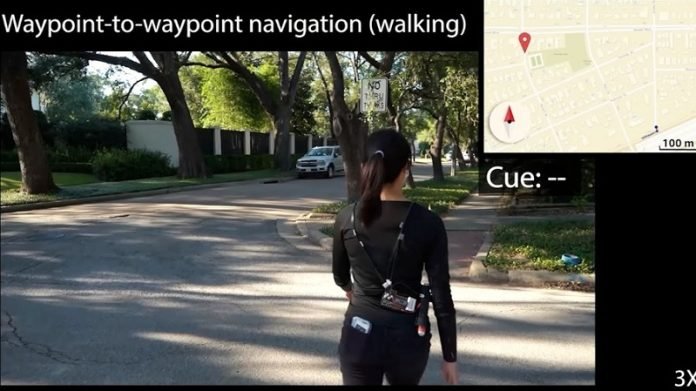
Do your gadgets only talk and show things but never touch?
Well, engineers at Rice University are changing that. They’ve made special clothes that can “tap” you to send messages or directions.
This could be great news for people who have trouble seeing or hearing.
Usually, technology doesn’t use our sense of touch much. Think about it—your phone, your laptop, or even your smartwatch mostly just show you things on a screen or make sounds.
But now, scientists have made clothes that can touch you in ways to send complex signals.
So, how did they do it?
They used something called “fluidic control” to build signals directly into the fabric. It sounds complicated, but it’s just a smart way to make the clothes tap, squeeze, or vibrate using air pressure.
They fit a small, light tank of carbon dioxide (CO2) onto a belt. This feeds air into tiny pouches in the sleeves, making them inflate or deflate in different patterns.
This can be useful in many ways. For example, in a real-world test, the clothes guided a person through the streets of Houston. The taps on the sleeves told the person when to go forward, turn left, or turn right. It’s like your clothes are a living GPS!
What’s even cooler is that this technology reduces the need for a lot of complicated hardware. Instead of having to deal with lots of wires and electronic inputs, they could make do with just a few because they built the complexity into the fabric itself.
That makes these smart clothes more practical and easier to wear in everyday life.
These clothes could be especially helpful for people who have trouble hearing or seeing. For instance, the haptic—touch-based—feedback could support devices like cochlear implants. Cochlear implants help people with severe hearing loss, but they can struggle to understand speech in noisy places.
If the shirt could tap in a way that reinforces what they’re hearing, it could make communication much easier.
Besides, people who’ve lost a limb could also benefit from these clothes. Sensors on a prosthetic limb could collect data, and the clothes could relay that data back as a touch signal on another part of the body.
These smart clothes are also durable. They can withstand the rough and tumble of daily life, even washing. One of the researchers said, after washing it 25 times, cutting it, and patching it up, it still worked just fine!
So, get ready for a future where your shirt could tap you on the shoulder to tell you which way to go, help you understand what someone is saying, or even make video games and movies more real with touch sensations.
It’s like a new level of how we interact with the world, right at our fingertips—or in this case, on our sleeves!
The study was published in the journal Device.
Follow us on Twitter for more articles about this topic.



